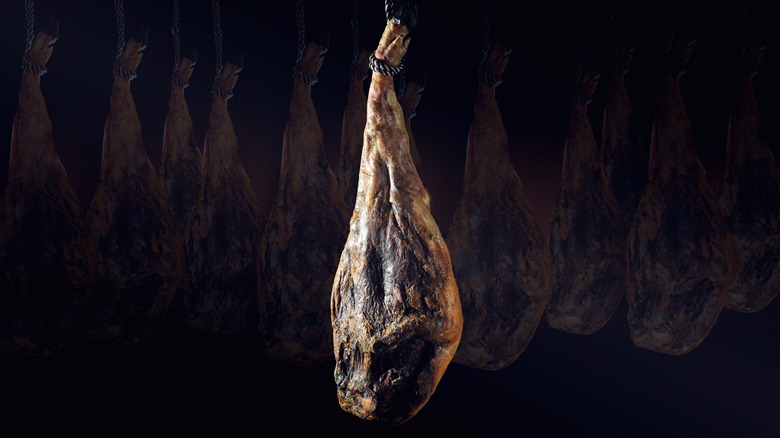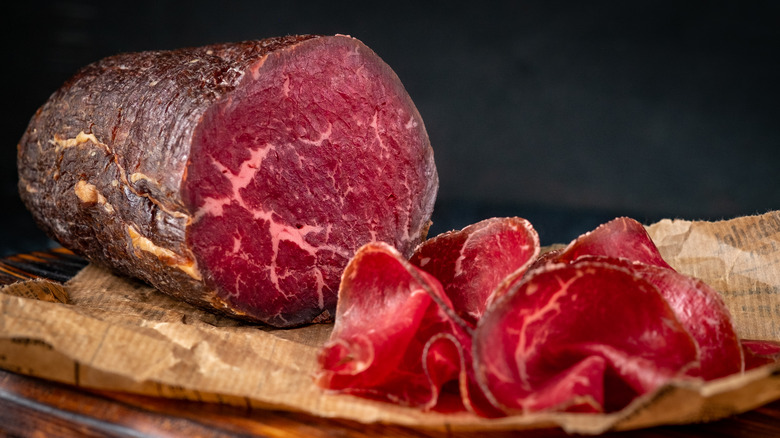What Is Whole-Muscle Salumi?
Over in Italy, they know a thing or two about curing meat. Some of the most well-known meat products in the world — prosciutto, capicola, guanciale, salami — all originate from Italy. It's a tradition rooted so deep in Italian culture that almost every village in every region across the whole of Italy has its own unique take on cured meat. And though it's nearly an irreducible term, the best one we have to encapsulate it all is salumi.
Salumi refers to any salt-cured meat in the Italian tradition. It consists largely of pork products, though the category includes cured beef cuts as well. Salumi is bifurcated into two areas: salami, which is meat that's been ground together with various spices and left to age in a natural pork casing, and whole-muscle salumi.
As the name implies, whole-muscle salumi involves curing an intact cut of meat in its entirety. Coming from various parts of the pig, like the shoulder, the neck, the belly, the jowls, or the leg, whole-muscle salumi includes some of the most identifiable Italian meat products. They also happen to be some of the most flavorful and work with anything from sandwiches and cheese boards to pasta dishes.
Types of whole-muscle salumi
Don't think for a moment that whole-muscle salumi is without fat. There's fat, alright. There's essentially always fat in cured meats, as it not only provides flavor but keeps the meat moist and tender. However, as opposed to grinding it up as you would for salami or sausages, whole muscles are trimmed, cured, and aged either wet or dry.
One of the most immediately recognizable examples of whole-muscle salumi is the classic prosciutto crudo. This version of the pork leg has been cured from a raw state in salt and dry-aged for a number of months. Characterized by its wonderful salty, meaty flavor, it is by far the most famous of all whole-muscle salumi, often seen wrapping hunks of melon. Another well-known pork salumi is capicola, also called capocollo (literally head-neck in Italian); it's a fatty meat derived from that area of the pig. Pancetta is a staple Italian pork salumi that, like bacon, is cured, comes from the belly of the pig and often smoked, but it is also fattier, dried, and not found in the refrigerator section.
Don't forget, whole-muscle salumi is not limited to pork. Bresaola, a lean, top-side cut of beef with little to no fat, most commonly comes from one of Italy's northern regions, Lombardy. Once dry-cured, the result is a meat with a beautiful purple hue that is best when sliced thin and served in a salad, on pizza, or with a good pecorino.

